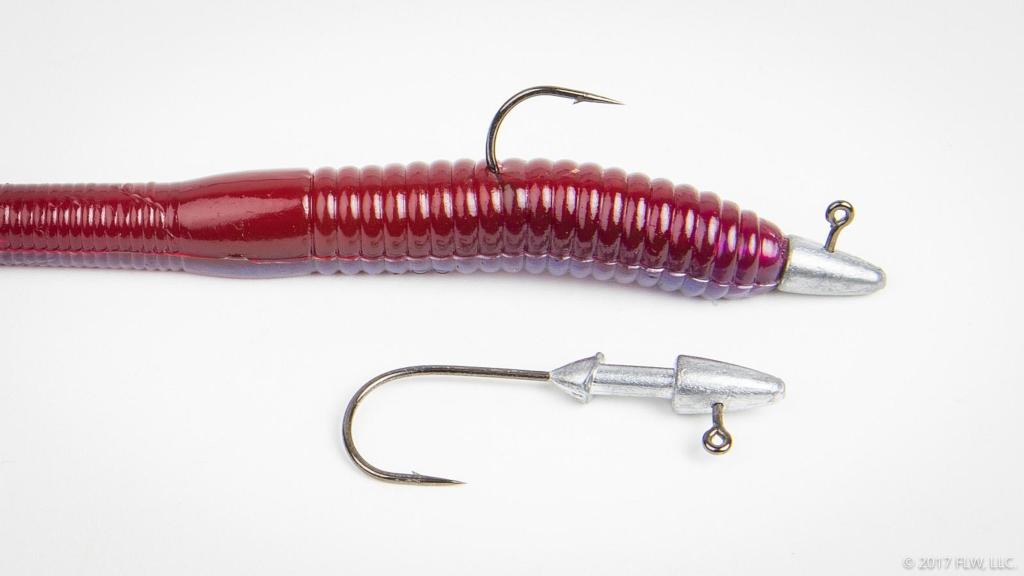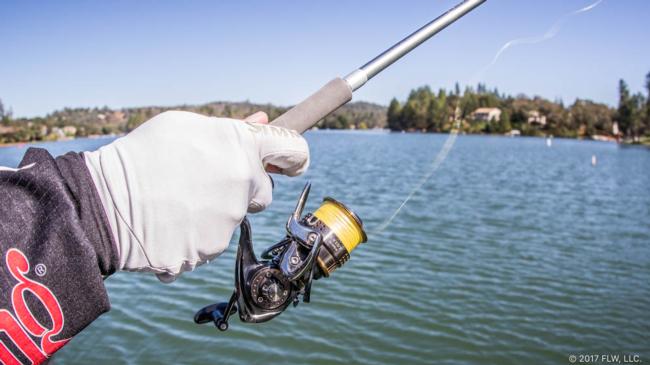Free Falling for Suspended Spotted Bass
Cody Meyer’s easy system to tempt wary bass in no-man’s land

As a rule of thumb, the fishing community generally accepts that there are certain timeframes or conditional factors that make fishing flat-out tough. Post-frontal conditions, rising or falling water, dirty water, and early postspawn all can make some anglers cringe at the thought of hitting the water.
Any situation where bass are suspended can also intimidate a bass angler. When bass are floating around aimlessly in the water and willing to swim to an entirely different area code at the drop of a hat, it no doubt creates tough fishing. Largemouths, smallmouths and spotted bass are all guilty of it from time to time, yet spots can be notorious for it.
West Coast pro Cody Meyer has grown up dealing with suspended spotted bass in clear water and has figured out how to handle this situation by perfecting an easy free-falling presentation.
The time is now
As far as Meyer is concerned, his approach to catching suspended spotted bass – or any suspended bass, for that matter – can work whenever the situation arises, though he finds the late season to be prime.
“Really you can catch suspended fish year round because from postspawn to prespawn bass will suspend,” says Meyer. “I honestly think the best time to chase big spotted bass that suspend is during the fall and winter.
“There are really three reasons why bass suspend: fishing pressure, rising or falling water, and bait. Bait is probably the biggest reason. Most bass in reservoirs feed on baitfish like blueback herring, smelt or small Kokanee salmon like we have out west. Bait like this doesn’t relate to structure, so it makes sense that the bass that feed on them suspend in the water column like they do.”
Where to look
Locating suspended bass might seem like finding a needle in a haystack. And catching those fish when you can’t see the target is also tough.
Meyer doesn’t let that deter him, however, and relies on modern electronics to locate and catch fish.
“The first thing I do when I launch on a body of water and I know I’ll try to target suspended spotted bass is find a bridge or a bluff wall – some place that I can visually see and know holds bass throughout the year,” Meyer explains. “From there I’ll idle around those areas until I start to mark fish on my graph. Take note of what depth you are seeing fish because if the majority of the fish are hanging around 20 feet, then they generally will hang out at that depth across the lake.”
From there you can run a variety of structure, including points, humps and deep breaks, scanning for bass at each stop.
Slow and simple gets results
So, what is Meyer’s secret to fooling stubborn suspended bass into biting? Truth be told, it involves not doing much.
“Most people that target suspended fish and especially spotted bass like to slow-roll a swimbait or throw a jerkbait,” Meyer notes. “And those work great at times, but one of my favorite things to do is cast out a small plastic on a jighead and let it slowly fall through the school of fish. I like to think of it as open-water punching with a small rig.
“To do this I generally have a target in mind, like a bluff wall or tip of a point. I know what depth the fish are in because I graphed around a little before making a cast. So now all I do is cast the bait out as far as I can and let it naturally fall on a slack line through the school. It is such a simple presentation, but I can’t tell you how many big fish I have caught doing it.”
Meyer will make several casts throughout an area where he believes fish are suspended, counting down each time until he believes the bait has passed the fish.
If you can’t stand to simply do nothing on the fall, Meyer suggest shaking the bait on a semi-slack line back to the boat. Done this way, he’ll let it swing as it falls like a pendulum by lifting the rod tip up and reeling up the slack, pausing to let the bait fall while shaking it as it swings.
Equipment
Meyer’s tackle selection is also pretty straightforward. He prefers a 1/16- or 1/8-ounce Owner Ultrahead Darter Head matched with either a Strike King Dream Shot or Fat Baby Finesse Worm. Meyer says that the darter head is a great choice because it spirals down on the fall and mimicks a dying baitfish. He also keeps an Owner Ultrahead Round Jig Head rigged (in the same sizes with the same baits) for when the fish are looking for something with a subtler fall.
Meyer fishes with his signature 7-4 Daiwa Tatula Elite spinning rod paired with a Daiwa Tatula LT 2500 reel to launch the lightweight baits as far as he can. Interestingly, the most important part of the whole package for Meyer is the line.
“I love using hi-vis braid for my mainline, and I think it is the most critical part of the whole thing,” he says. “I like 20-pound-or-less Seaguar Smackdown yellow braided line. Not only does it help cast the bait farther, it allows you to visibly see strikes since you are letting the bait fall on a slack line. I’ve seen it so many times with spotted bass where your line stops for a split second and then you set the hook and catch one. Without having yellow line, there’d be no way you could catch those fish.”
Since clear water and yellow line don’t mix, Meyer runs a 15-foot section of 6-pound-test Seaguar Tatsu fluorocarbon leader. His rule of thumb for leader size is the lighter the line you use for a leader, the more action the bait will have and, in turn, the more bites you will get.
With such a light line for a leader, Meyer is careful with his hookset. If he feels a bite or sees the line jump or stop, he just starts reeling until the rod loads up. He lets the drag and rod do the rest. In open water, he says you can afford to play the fish for a while, so don’t get in a hurry to land them.
“From personal experience I believe the bigger spotted bass suspend and barely get fished for, so you can have them all to yourself – especially in California,” says Meyer. “I’m also a firm believer that the biggest spots live offshore their whole life. That’s why this presentation can be so effective. Plus, it is super easy for almost anyone to do. It’s how I caught my 10.8-pound giant last year.”



